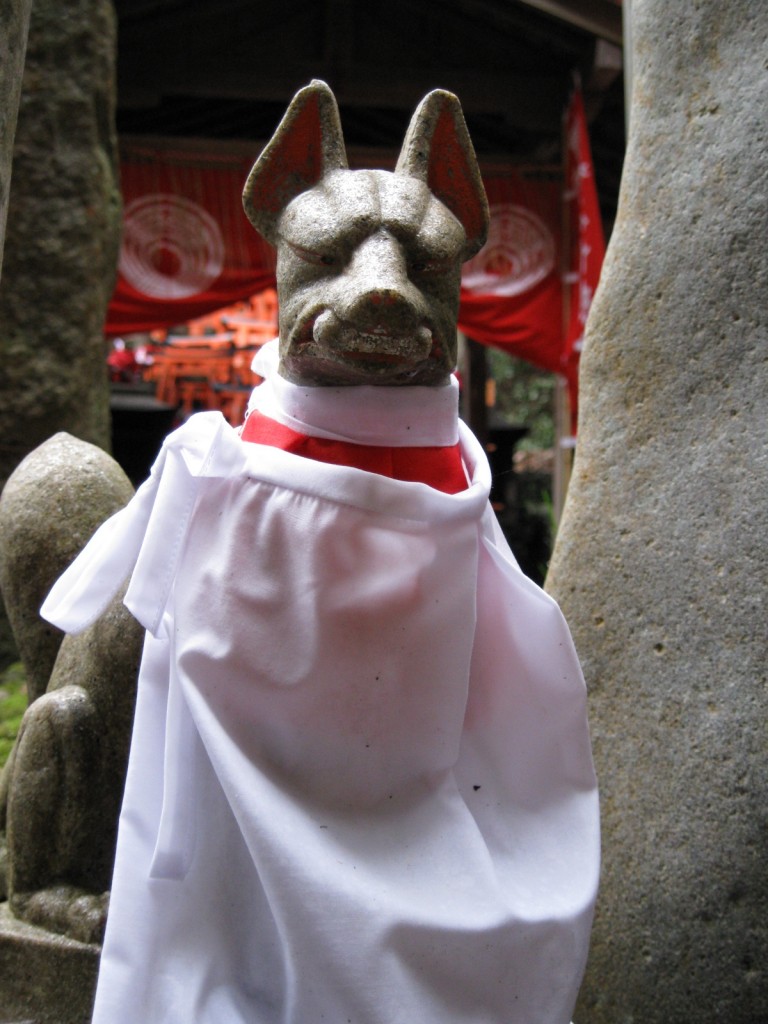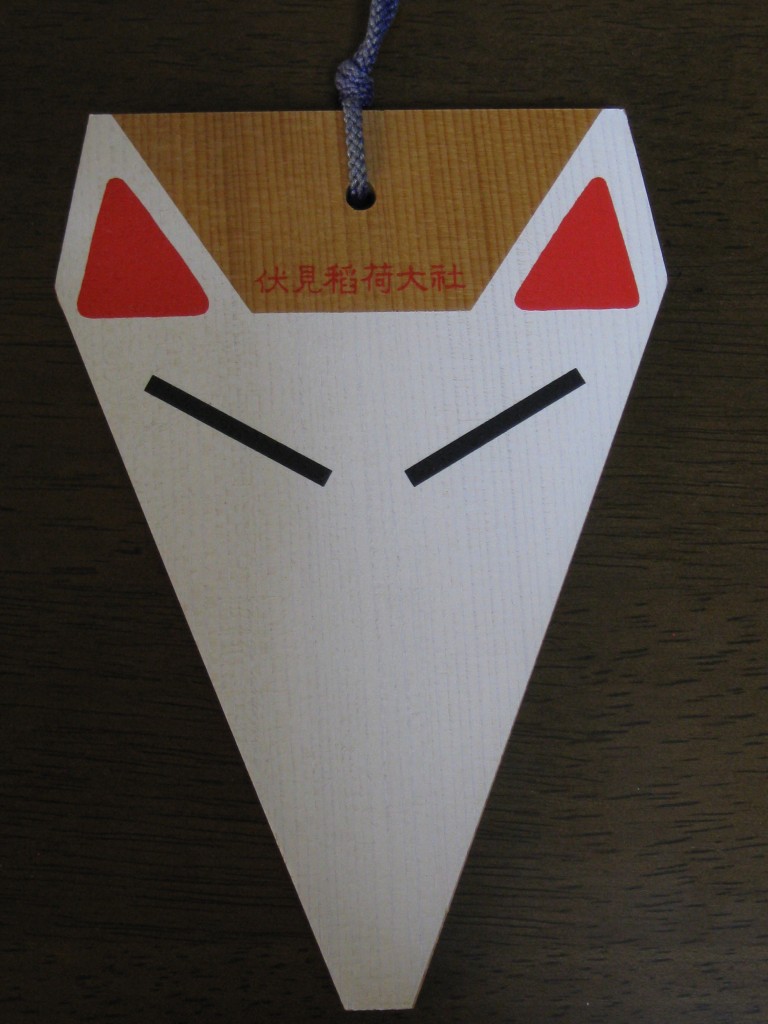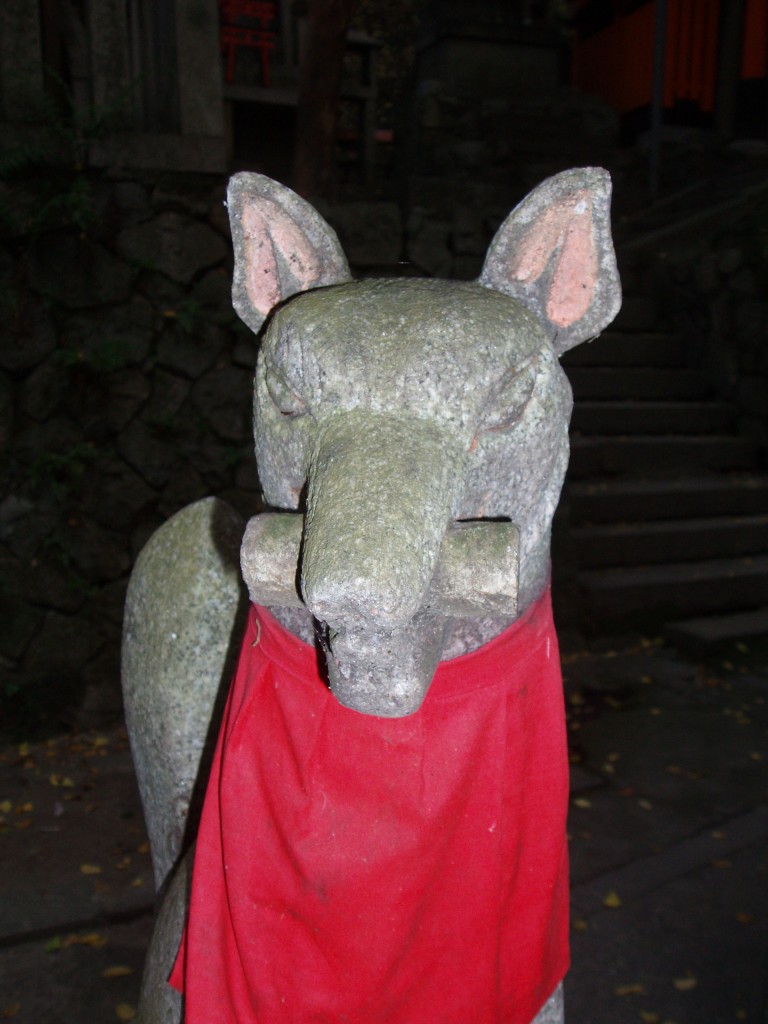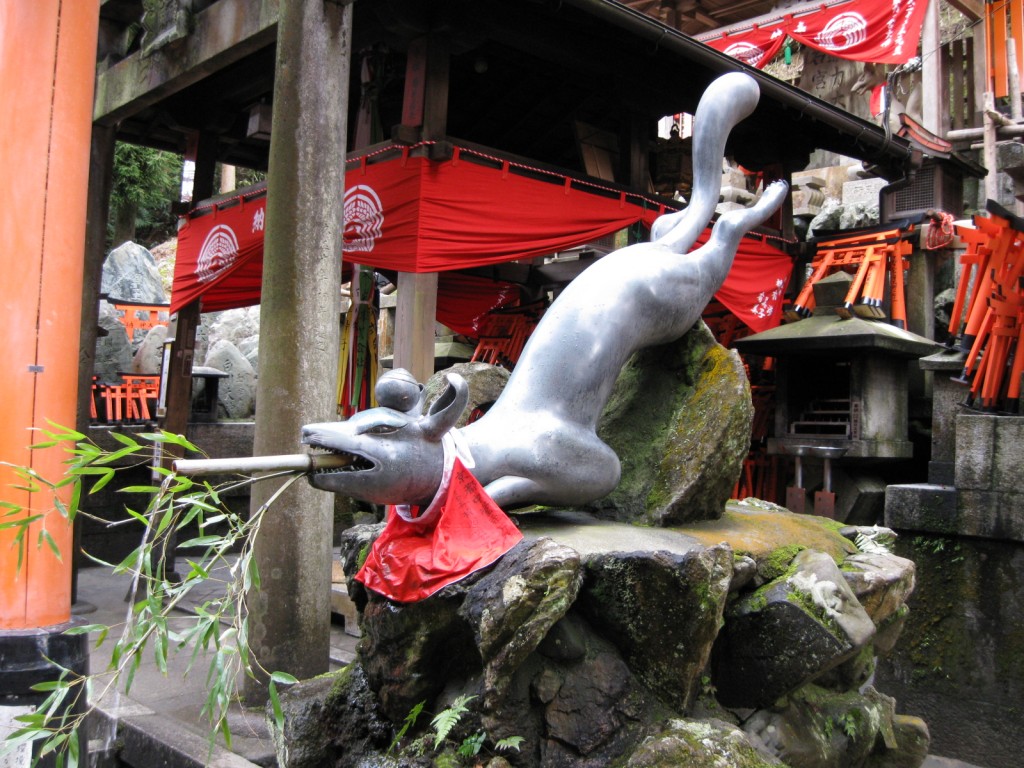Foxes have played a significant part in Japanese folklore, quite apart from their role as a servant of the agricultural deity, Inari. The information below, showing the continental and international connections, is edited and abridged from a recent item posted on the Japanese Mythology and Folklore site, (For the full article, please click here.)
************************************************************
 The clear link between foxes and Inari is documented in Edo Period illustrated works, in which there are depictions of “fox weddings” with humanized foxes going through weddings. In Kudamatsu, Yamaguchi Prefecture, in the Inari festival held on November 3 every year, there is a re-enactment of a wedding between foxes.
The clear link between foxes and Inari is documented in Edo Period illustrated works, in which there are depictions of “fox weddings” with humanized foxes going through weddings. In Kudamatsu, Yamaguchi Prefecture, in the Inari festival held on November 3 every year, there is a re-enactment of a wedding between foxes.
The re-enactment refers to the legend that a white fox couple at that shrine was looking for something lost, and was deified as a god of good harvest and thriving business. The ones who perform as the fox couple are selected from among the people of Kudamatsu, but it is said that as the female who plays the part of one of the newlywed is going to be blessed with a good match, there is a benefit to marriage at that shrine.
The most probable explanation for the fox wedding, and other fox legends, is that it was an ancient agricultural and seasonal astronomical rite, that was inherited from the Altaic-or Northern Chinese continental migrants who brought grain agriculture into Japan, both millet and rice. From studies of archaeology and astronomical knowledge, fox legends are believed to have a four-thousand year old history, associated with prehistoric earth and sky agricultural rites and a part of the ancients’ rich body of calendrical knowledge of cyclical-seasonal readings.
Fox sculptures are known in archeaology from Turkey’s Gobleki Tepe site, and fox myths and temples are found in abundance across pan-Mesoamerican and South American sites, where there are fox temples featuring earth offerings and sightings of celestial bodies’ alignments and seasonal predictions.
 A 2011 study, published in the Journal of Cosmology, reviews the “evidence associated with the fox representations [and] argues that the beginnings of hierarchy in Andean South America occurred with the rise of a priestly cult who maintained a complex knowledge of astronomy.” The article entitled “Ancient South American Cosmology: Four Thousand Years of the Myth of the Fox”, states:
A 2011 study, published in the Journal of Cosmology, reviews the “evidence associated with the fox representations [and] argues that the beginnings of hierarchy in Andean South America occurred with the rise of a priestly cult who maintained a complex knowledge of astronomy.” The article entitled “Ancient South American Cosmology: Four Thousand Years of the Myth of the Fox”, states:
“The mythology of the South American fox is associated with both the sky, into which he ascended, and more strongly, the earth below. He brought back carbohydrates from the heavens in the form of agricultural plants, and animal protein in the form of fish. His association with climate change and prediction of crop success is told in stories over much of South America. His constellation is visible to indigenous peoples in a number of South American countries. From coastal Peru to southern Ecuador, shamans still use the fox to make prophesies, and variations on the fox myths are still heard from Central to South… The first representations of the Andean fox were found at the site of Buena Vista, Chillón Valley, Perú.
In Japan, with its adopted western Gregorian calendar, the calendrical associations of fox myths are for the most part forgotten, however, vestiges of the seasonal significance remain. For example, according to legends of Fukushima Prefecture, it is said that in the evening on the 10th day of the 10th month of the luni-solar calendar, if one wears a suribachi on one’s head, and sticks a wooden pestle in one’s waist, and stands under a date plum, it is possible to see a fox’s wedding. In Aichi Prefecture, it is said that if one spits in a well, intertwines one’s fingers and looks through a gap between them, one is able to see a fox’s wedding.
 Shapeshifters, a separate Indo-European or Indo-Iranian development
Shapeshifters, a separate Indo-European or Indo-Iranian development
The above 2011 study emphasized that stories of shape-shifting foxes belong to a separate tradition and are possibly a later Indo-European/Aryan development. This appears to accord with the Japanese situation, where shapeshifting foxes are mostly medieval developments showing diversified late Silk Road Eurasian influences.
There are also stories of weddings not just between foxes, but also between a human male and a female fox, and a representative work is the story about the birth of the Heian period Yin-Yang Wizard, Abe no Seimei [said to be the son of a white fox]. Also, in the Konjaku Monogatarishū there is the story of a fox who appeared before a married man, shapeshifted and disguised itself as that person’s wife. In the collection Tonoigusa published in 1677, there is the reverse story where a male fox fell in love with a female human, shapeshifted and disguised itself as the woman’s husband, which resulted in the birth of children with atypical appearance.
Finally, in Myths and Legends from Korea: An Annotated Compendium of Ancient and Modern Materials (edited by James Huntley Grayson) on pp.396-7 a Korean Fox Wife tale is compared with its counterpart, a Japanese Fox Wife tale. At the same time, it is suggested from the background of the next tale of the fox who became the Empress of China, that the fox-ancestry or fox-descent tales of both Korea and Japan originate from Chinese sources which in turn likely originated from Iranic or Dravidian sources, and are a variant of the Mongolic wolf-descent tales.
Source and references:
“Ancient South American Cosmology: Four Thousand Years of the Myth of the Fox”, Journal of Cosmology, 2011


Leave a Reply